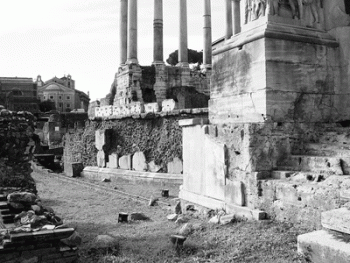American Journal of Archaeology | The Journal of the Archaeological Institute of America
You are here
Roman Stone Masonry: Volcanic Foundations of the Ancient City
July 2006 (110.3)
Roman Stone Masonry: Volcanic Foundations of the Ancient City
This article provides a geological framework for the study of the cut-stone and concrete masonry of ancient Rome that yields important new insights into the many uses of native volcanic rock—tuffs, pozzolane, and lavas—in the development of Roman architecture. Geological maps and field observations of building stones in existing monuments, along with experimental and petrographic measurements of the physical and aterial characteristics of the Roman tuffs and travertine, offer a scientific basis for the examination of descriptions of Roman stone construction by Vitruvius. The appendix gives a full geological description of each stone and a gazetteer of extant Roman buildings using that stone. These data form a thorough and precise foundation for tracing the provenance of various volcanic rocks and for appreciating the Romansí empirical understanding of their diverse and distinctive characteristics. Our geological reassessment corrects misconceptions in previous archaeological scholarship that depend on a faulty nomenclature for Roman stone building materials based, in part, on mistranslations of the original Latin terms used by Vitruvius. The updated geological maps included here will make possible accurate studies of the transport of stone from quarries and the economy of urban construction, with a view to documenting the human capacity to transform the landscape of Rome and its surroundings both geomorphologically and architecturally over many centuries. A better understanding of the geological characteristics of Roman stone masonry can guide us in the archaeological preservation of the ancient monuments.
Roman Stone Masonry: Volcanic Foundations of the Ancient City
By Marie Jackson and Fabrizio Marra
American Journal of Archaeology Vol. 110, No. 3 (July 2006), pp. 403–436
DOI: 10.3764/aja.110.3.403
© 2006 Archaeological Institute of America


